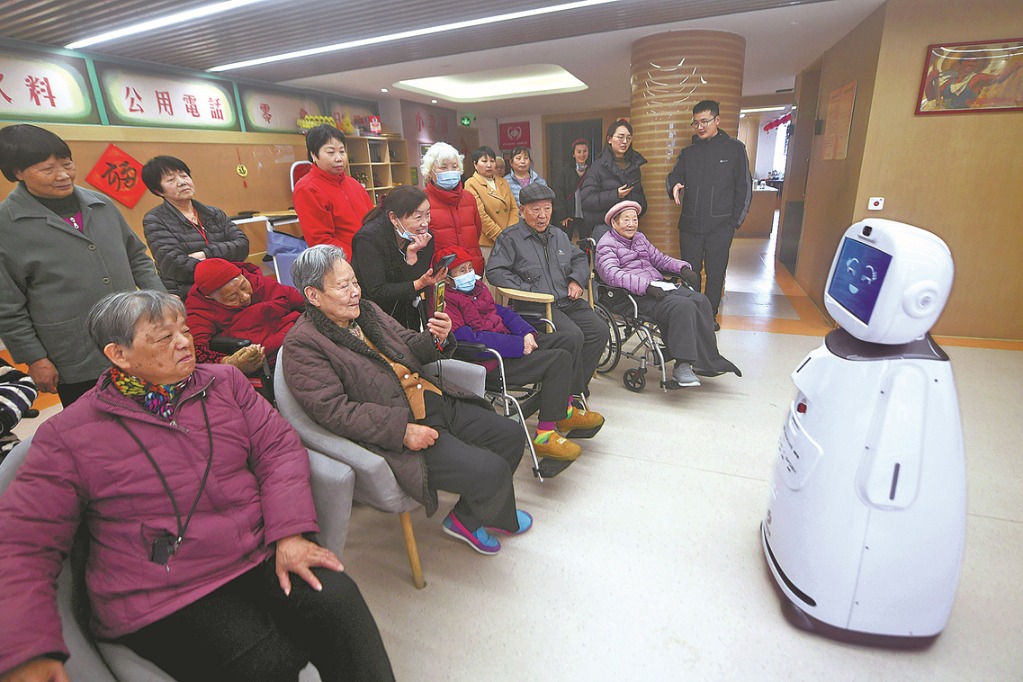No zero-sum game
China and Japan can synergize their respective strengths to deepen their cooperation in third-party markets


Since China and Japan normalized diplomatic relations with the signing of the 1972 China-Japan Joint Statement, bilateral cooperation has experienced ups and downs, but the overall trend has always been moving forward.
In the long run, Japan and China will remain interdependent and deeply integrated in trade, and the Japanese economy is unable to "decouple "from China. But in the short term, their trade exchanges are slowing down as Japan follows the United States in imposing sanctions on Chinese enterprises.
Under the framework of the Regional Comprehensive Economic Partnership, China and Japan reached a tariff reduction arrangement for the first time and pledged to expand the zero-tariff policy coverage for their traded goods and facilitate the implementation of the RCEP's rules of origin. The agreement highlights the commitment of both countries to free trade and multilateralism, and signifies that they will rely on it to form a deeply integrated production network. China and Japan should seize the opportunity of the RCEP's entry into force, the 53rd anniversary of the normalization of diplomatic relations and the 47th anniversary of the signing of the Sino-Japanese Treaty of Peace and Friendship to eliminate political interference and trade frictions and deepen their mutually beneficial trade relationship.
In addition, China can continue to increase its sister cities relations with Japan, expand the coverage of China-Japan cooperation demonstration zones in Chengdu and Qingdao, fully leverage these zones' leading role and exemplary effect, and encourage diverse interactions between twin cities to enhance mutual understanding and trust. By connecting the two peoples' hearts and minds, the external environment for bilateral trade can be stabilized.
Japan should cancel its End User List featuring "catch-all" control, and remove Chinese entities from the list. It should also abolish unreasonable export controls on high-performance semiconductor manufacturing equipment to China, and reject the influence of the US' unreasonable "long-arm jurisdiction". China is Japan's largest trading partner and export destination and a huge dynamic market. Building "small yards with high fences" and "decoupling" will only create a lose-lose situation. Instead, closer trade cooperation will help Japan realize economic recovery and stable growth.
Since China overtook Japan to become the world's second-largest economy in 2010, its domestic advanced manufacturing has kept improving. Thanks to the advantages of its super-large market, complete industrial system and strengths in digital and emerging industries, China has been steadily climbing up the global industrial chain. The "R&D in Japan+Made in China "model is no longer sustainable and gradually declining. Currently, Chinese and Japanese industries highly overlap, with their high-end manufacturing sectors competing with each other. Some of Japan's right-wing forces have begun to hype up the "China threat theory", leading to occasional trade frictions between the two neighbors.
Facing this new phenomenon, both sides should fully recognize that upgrading labor-intensive to capital-intensive, and then to knowledge-intensive sectors is a common economic law for all countries. The two countries should follow this objective law and understand the changes in their trade structure. Long-term technological competition among major powers will continue, but the global labor division is an unstoppable trend. The Sino-Japanese network-based composite structure, which includes both vertical and horizontal division, can still promote efficient resource allocation within the region. The non-homogeneity of the Chinese and Japanese industrial structures and the complementarity in high-tech fields still exist, offering a solid foundation and broad space for cooperation.
China and Japan can establish mutually beneficial norms and rules, continuously optimize the Asia-Pacific industrial and supply chain layout, explore diversified cooperation opportunities, and strive to seek more converging points of interest. Japan is one of the world's key sources of high-end photoresists. The two sides can jointly develop more advanced industries such as semiconductors, upgrade industries, and stabilize the global industrial and value chains. In addition to their trade in goods, they should also optimize their trade structure, strengthen cooperation in frontier areas, enhance industrial upgrading and cross-border integration through new technologies, expand their trade in services, and develop new trade forms.
Meanwhile, they should innovate trading methods. By strengthening institutional cooperation in areas such as local currency settlement, they can reduce trade costs and uncertainties. China could approve more Japanese enterprises in its comprehensive bonded zones — the highest form of special customs supervision zones in the country, and grant them the status of general taxpayers therein, thus enabling them to enjoy preferential tax policies. Regarding emerging trade trends such as digital trade, China and Japan could pilot a preferential system that exempts small amount goods from consumption tax and tariffs. They could also promote mutual recognition of digital certificates and electronic signatures, gradually shift from a positive list to a negative one, deepen the construction of comprehensive pilot zones for cross-border e-commerce, guide multiple entities to accelerate the layout of overseas warehouses, and create a favorable environment for e-commerce, thereby further boosting bilateral trade.
By effectively combining China's production capacity advantages, Japan's technological strengths and the development needs of third countries, China and Japan can not only enable their enterprises to avoid homogeneous competition and share development achievements, but also bring greater benefits to third-party markets, creating a win-win spillover effect for all parties involved.
Chinese enterprises should explore new ways to implement the memorandum of understanding on third-party market collaboration with Japan and push for the progress of some confirmed projects. They should also explore and share new opportunities for cooperation in RCEP third-party markets through the China-ASEAN Expo. Financial institutions could provide diversified financing channels for projects in third-party markets that both sides jointly invest in. Additionally, they could utilize channels such as the China-Europe freight train service to expand cooperation in Central Asia and Europe, bid for projects with joint investment, and share third-party market information.
The two countries hold tremendous development potential. By coordinating and aligning technical standards, promoting mutual recognition of legislation, and building market access mechanisms, China and Japan can integrate their strengths to deepen cooperation in third-party markets. This approach can improve their competition and cooperation structure, avoid zero-sum games and enhance mutual trust by building mechanisms that meet their development needs in the new era.
Yu Miaojie is president of Liaoning University. Lu Weixiao is a lecturer at Yangzhou University. The authors contributed this article to China Watch, a think tank powered by China Daily.
Contact the editor at editor@chinawatch.cn.


































